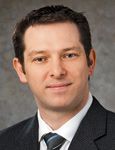News Spectrum
Spectroscopy magazine is pleased to announce the addition of Gary McGeorge, PhD, to its editorial advisory board.
McGeorge is an experienced analytical scientist with more than 13 years of industrial experience. He has led various projects in the area of PAT, noninvasive method development, materials characterization, and spectroscopic methods. He is internationally recognized in the areas of crystal form analysis, drug product analysis, and problem solving using spectroscopic methods.

Gary McGeorge, PhD, Editorial Advisory Board of Spectroscopy
He received his PhD in physical chemistry from the University of Durham (United Kingdom), where his doctoral thesis focused on the analysis of nitrogen-containing dyestuffs by solid-state NMR. He then carried out post-doctoral research under Professor David M. Grant at the University of Utah (Salt Lake City, Utah) on the development of methods for increasing the sensitivity of specialized carbon-13 solid-state NMR experiments — namely, magic-angle-tuning experiments that can unravel the electronic structure of large polycrystalline solids.
He joined Bristol-Myers Squibb (New York, New York) in 1998, initially as a research investigator. Since then, he has moved up through roles of increasing responsibility to his current position as a principal scientist. In his work there, he has used a variety of methods, particularly spectroscopic techniques such as ssNMR, IR, NIR, FT-IR, Raman, and chemical imaging (Raman and NIR) for the analysis of raw materials, blends, and finished products, and for the study of polymorphism. In his current role, he is a scientific leader in a group focusing on process analytical technology (PAT) for drug product manufacturing.
He routinely chairs sessions at the EAS conference for Coblentz Society and is a reviewer for several spectroscopy and pharmaceutics based journals.
New Study Reveals Insights into Phenol’s Behavior in Ice
April 16th 2025A new study published in Spectrochimica Acta Part A by Dominik Heger and colleagues at Masaryk University reveals that phenol's photophysical properties change significantly when frozen, potentially enabling its breakdown by sunlight in icy environments.